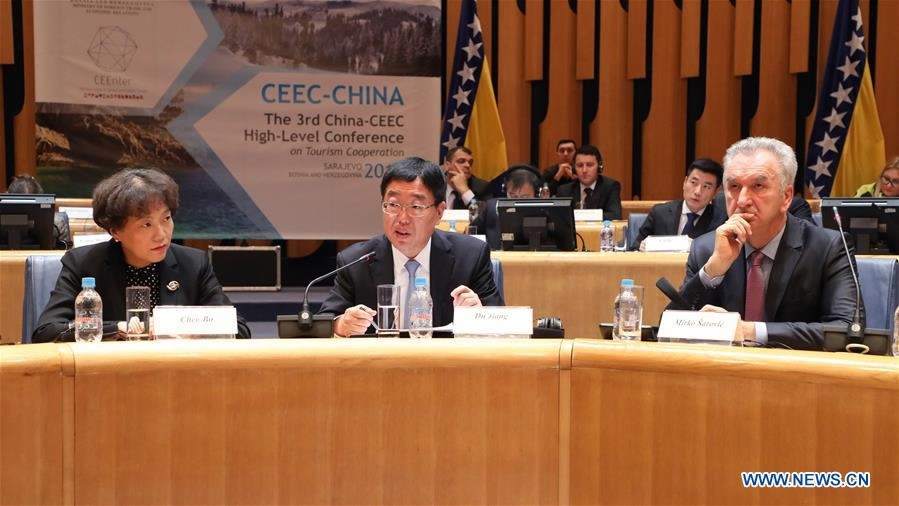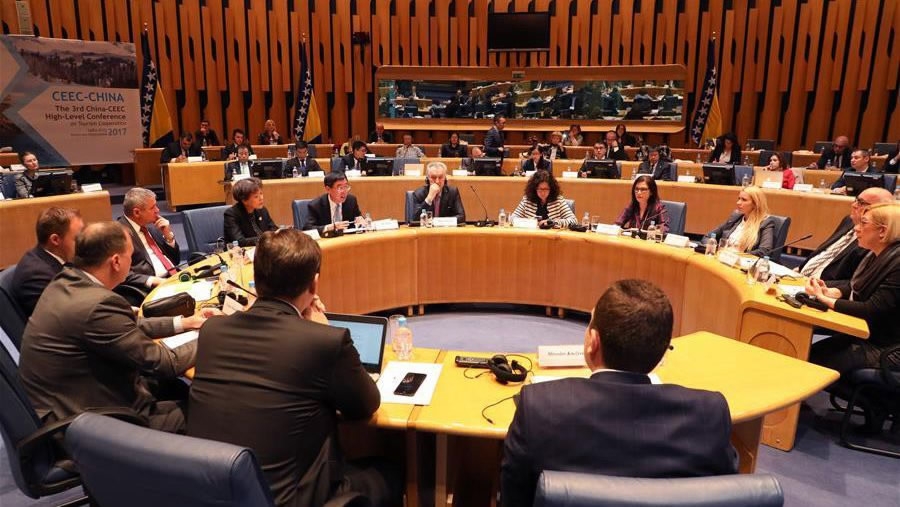Chinese Premier Li Keqiang has arrived at Budapest to meet his counterparts from 16 Central and Eastern European countries. As the "16 + 1" initiative enters its fifth year, this summit is expected to be the starting point for a new phase of cooperation.

Chinese Premier Li Keqiang is welcomed by Hungarian Prime Minister Viktor Orban and other senior officials upon his arrival in Budapest on Nov. 26 for an official visit to the country and the sixth meeting of heads of government of China and 16 Central and Eastern European Countries (CEEC). / Xinhua Photo
Chinese Premier Li Keqiang is welcomed by Hungarian Prime Minister Viktor Orban and other senior officials upon his arrival in Budapest on Nov. 26 for an official visit to the country and the sixth meeting of heads of government of China and 16 Central and Eastern European Countries (CEEC). / Xinhua Photo
Undoubtedly, the tremendous economic and trade complementarity and potential for cooperation are the irreplaceable and important foundations that bring the 16 CEECs closer to China. Since 2012, the total trade volume of the 16 nations with China has increased from 52.1 billion to 58.7 billion US dollars, a jump of 9.7 percent, surpassing the trade growth between China and its largest trading partner, the EU.
The achievements in the mutual investment field have become more apparent. In 2012, Chinese enterprises invested about 3.5 billion US dollars in the 16 CEECs and that figure rose to more than 8 billion US dollars in 2016. The investment from the CEECs in China also witnessed growth over the same period. The rapid expansion shows that the CEEC has become an important partner for China's outward investment and economic cooperation.
In addition to the achievements made in trade and investment, the 16+1 cooperation has expanded to a vast array of areas such as infrastructure, finance, tourism, education and agriculture, covering most of the economic and social sectors.

A man displays wine made in Romania during the Central and Eastern Europe Countries (CEEC) Products Fair in Ningbo, east China's Zhejiang Province, June 9, 2015. /Xinhua Photo
A man displays wine made in Romania during the Central and Eastern Europe Countries (CEEC) Products Fair in Ningbo, east China's Zhejiang Province, June 9, 2015. /Xinhua Photo
What Premier Li and his colleagues in CEEC will do in Budapest is not only to sum up the achievements and experiences of the past five years but also to show more confidence in their shared future. The sustained and rapid growth in cooperation is undoubtedly the basis of such confidence. In addition, it also counterbalances the negative effect of the current questioning of free trade and investment and helps maintain the momentum of cooperation among all parties.
CEEC nations have been actively participating in the co-building of the "Belt and Road Initiative” put forward by China, aiming to build a closer connectivity among economic sectors and people-to-people exchanges and provide greater opportunities for 16 + 1 cooperation during the next five years. The leaders’ meeting in Budapest under the theme "Deepening the Economic, Trade and Finance Cooperation; Promoting the Development of Mutual benefits and Win-win Cooperation" demonstrates the ambitions of all parties to seek more opportunities through linking 16+1 cooperation with the "Belt and Road Initiative” in the future.
The prototype for 16 + 1 cooperation is the China-CEEC Economic and Trade Forum held in Budapest in 2011. Therefore, the return of all leaders of the 17 countries to Budapest, the birthplace of this cooperation mechanism, sends a strong message of going forward to the world.

Vice chairman of China National Tourism Administration Du Jiang (C) speaks at the third ministerial summit on cooperation in tourism between China and Central and Eastern European countries (CEEC) in Sarajevo, Bosnia and Herzegovina, on Nov. 24. /Xinhua Photo
Vice chairman of China National Tourism Administration Du Jiang (C) speaks at the third ministerial summit on cooperation in tourism between China and Central and Eastern European countries (CEEC) in Sarajevo, Bosnia and Herzegovina, on Nov. 24. /Xinhua Photo
At its beginning, 16+1 was misunderstood and questioned by some from the European Union as “dividing the EU” and its success so far has turned out to be strong supportive evidence of breaking down the zero-sum logic and promoting win-win cooperation. To some degree, it is understandable that the EU showed its concerns about the goals, procedures and content of the cooperation mechanism because among the 16-member CEEC are 11 member states of the EU.
In response to the EU’s concerns, China and its partners in CEEC have maintained an open, transparent and cooperative attitude towards the EU. Apart from inviting officials from the EU institutions to attend the leaders' meetings, the 17 governments have stressed in official documents that the 16+1 process will abide by EU laws and regulations. The Chinese government regards the 16+1 format as an important supplement to its cooperation with EU.
As long as 16+1 sticks to the spirit of openness, inclusiveness, mutual benefit and win-win cooperation, the peoples of the 17 countries can achieve more in the future. And the so-called “dividing EU” claim would prove to be a misperception. Before that, China and its CEEC partners need to work together to further improve the cooperation, which is the main task of the gathering in Budapest.
(Cui Hongjian is a director at the Department for European Studies of the China Institute of International Studies. The author’s opinions are his own and do not necessarily reflect those of CGTN.)





